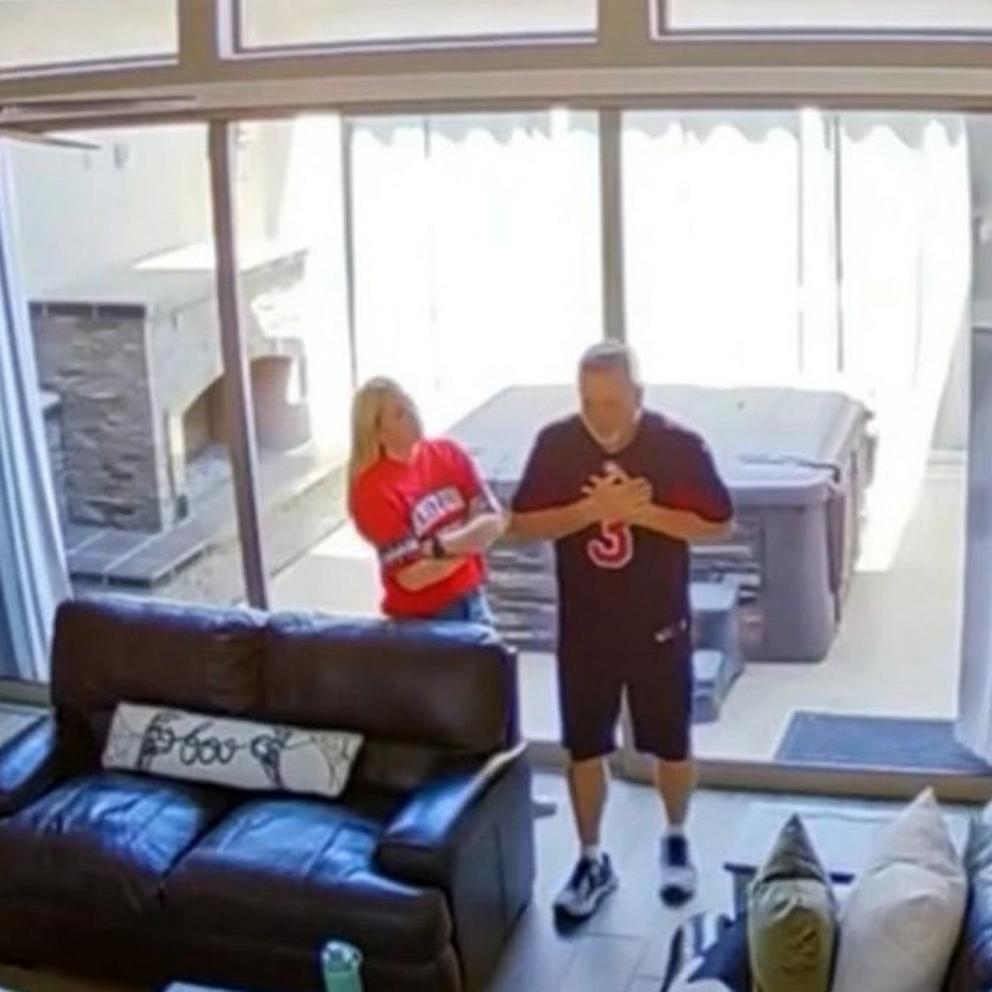Kate Spade's tragic death shines a light on suicide: Signs, resources and how survivors cope with a loved one's death
Kate Spade was known for her eclectic style and the brightly colored, whimsical fashions she created, so her death by apparent suicide shocked fans.
Spade, 55, took her own life inside her New York City apartment Tuesday morning, police sources told ABC News.
She leaves behind her husband, Andy Spade, and their 13-year-old daughter.

The designer described her life as "a little kooky, but a lot of fun," in a 2016 interview with The Cut.

Suicide is the 10th leading cause of death in the United States, according to the U.S. Centers for Disease Control and Prevention (CDC).
Suicide rates for white females increased 60 percent between 1999 and 2014. Middle-aged women, between ages 45 and 64, had the highest suicide rate among women in both 2014 and 1999, according to CDC data.

If you are in crisis or know someone in crisis, call the National Suicide Prevention Lifeline at 1-800-273-TALK (8255) or contact the Crisis Text Line by texting HOME to 741741. You can reach Trans Lifeline at 877-565-8860 (U.S.) or 877-330-6366 (Canada) and The Trevor Project at 866-488-7386.
ABC News chief medical correspondent Dr. Jennifer Ashton's ex-husband, Dr. Robert Ashton, the father of her two children, took his own life in February 2017.
The experience, she recalled, "leveled" her family.
"It leveled us," Ashton said on "Good Morning America." "My children were 16 and 18 at the time and I was totally unprepared for the physical and emotional trauma that comes in the wake of that."
Ashton described the people who are affected by suicide as "the survivors." She said she knew little about suicide at the time of her ex-husband's death
"I’m embarrassed to say that when it hit my family, as a doctor, I didn’t know a lot about it, despite the fact that it had affected three of my really close friends," she said. "Twenty years ago, I didn’t know anyone who was affected by suicide and now that list is sadly growing."
Here is more information about suicide, including risk factors and signs to look for.
How common is suicide?
In 2015, there were 45,000 deaths due to suicide, according to the CDC.
In 2016, 9.8 million people had serious thoughts of suicide, 2.8 million made a suicide plan and 1.1 million attempted suicide, according to the Suicide Prevention Resource Center.
This translates to one suicide death every 11.9 minutes, and one suicide attempt every 29 seconds.
A 2008 Harvard study found that the lifetime chance of suicidal thoughts for adults across 17 different countries was 9 percent.
Who is at risk for suicide?
Suicide affects all ages.
Nearly nine percent of youth in grades nine through 12 reported that they had made at least one suicide attempt in the past 12 months, according to the American Foundation for Suicide Prevention, based on the 2015 Youth Risk Behaviors Survey.
Suicide is linked to mental disorders, particularly depression and alcohol use disorders.
The strongest risk factor for suicide is a previous attempt at suicide, according to the American Psychiatric Association.
Certain events and circumstances may increase risk such as having a psychiatric illness including, but not limited to, depression, bipolar disorder, schizophrenia and anxiety disorders.
Around 90 percent of patients who attempt suicide have a psychiatric disorder, according to a 1997 report in The New England Journal of Medicine.
While depression is a contributory factor for most suicides, it does not need to be present for a suicide to be attempted or completed, according to the American Foundation for Suicide Prevention.
Other risk factors for suicide include chronic physical illnesses, family history of suicide, history of exposure to trauma or abuse, recent losses or life stressors, military service, hopelessness and impulsivity, misuse of alcohol and drugs and access to lethal means such as firearms, experts say.
Suicide risk also increases with age.
How is depression diagnosed?
Every time you see your primary care provider you are likely being assessed for depression.
When you enter the exam room, you may complete an assessment you don’t even know you are completing. The exam, the PHQ2, includes the following question: “Over the past two weeks, how often have you been bothered by the following problems: Little interest or pleasure in doing things? Feeling down, depressed, or hopeless?”
If someone screens positive on this, they are asked another seven questions (the PHQ-9) to determine whether they meet the criteria for depression.
Where is help available?
Questioning suicide? Call someone, anyone: A friend, neighbor, family member, religious figure, hospital, doctor, mental health specialist, the police department, or the National Suicide Prevention Lifeline, a 24/7, free and confidential resource, at 1-800-273-TALK (8255).
It is important to remember you are not alone and people do want to help you, regardless of what you think.
How can you help a suicidal person?
It is important to show a potentially suicidal person that you are worried about them. Oftentimes this will show them that their feelings are accounted for.
The National Suicide Prevention Lifeline website offers many resources for the different reasons someone may be contemplating suicide, as suicide does not discriminate.
The website offers five steps that may help you help someone considering suicide.
Step One: Ask. There is a common misconception that asking someone if they have/ are considering killing themselves puts the idea in their head — it does not. Do not be afraid to ask!
Step Two: Keep them safe. If someone admits to considering suicide, it is important to seek immediate medical attention, especially if they shared their plan with you or have access to firearms, the number one cause of suicide (50 percent).
Step Three: Be there. Listen without judgment and with empathy. Let them know they have a shoulder to lean on when they need.
Step Four: Help them connect. Help them find a support system to reach out to. Support is very important for someone battling the idea of suicide. Those who have attempted to harm themselves are often at risk of another attempt at suicide.
Step Five: Follow up. Following up could mean preventing thoughts of suicide or another attempt.
Seeking a professional who can help and monitor a suicidal person can also make a big difference. You can also call the National Suicide Prevention Lifeline at 1-800-273-8255, whether you yourself are suicidal or you are worried about someone you know.
Those at risk for suicide do not generally want to die, but want help in reducing the pain they are experiencing so they can live a more fulfilling life.
Talking can sometimes help someone who feels hopeless in the moment recognize that they do have a reason to live.
ABC News' Medical Unit residents Eric Ascher, Sima Patel and Karine Tawagi contributed to this report.
If you are in crisis or know someone in crisis, call the National Suicide Prevention Lifeline at 1-800-273-TALK (8255) or contact the Crisis Text Line by texting HOME to 741741. You can reach Trans Lifeline at 877-565-8860 (U.S.) or 877-330-6366 (Canada) and The Trevor Project at 866-488-7386.







